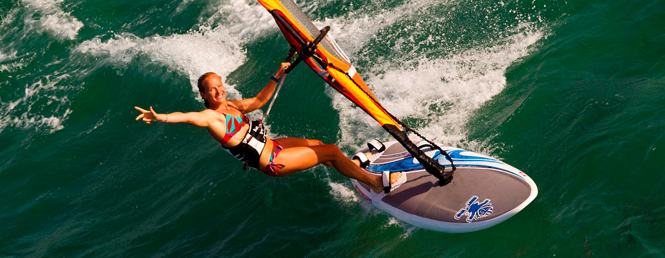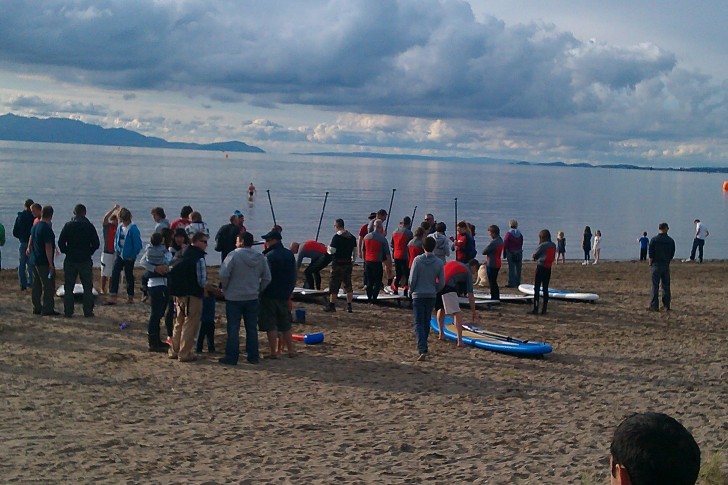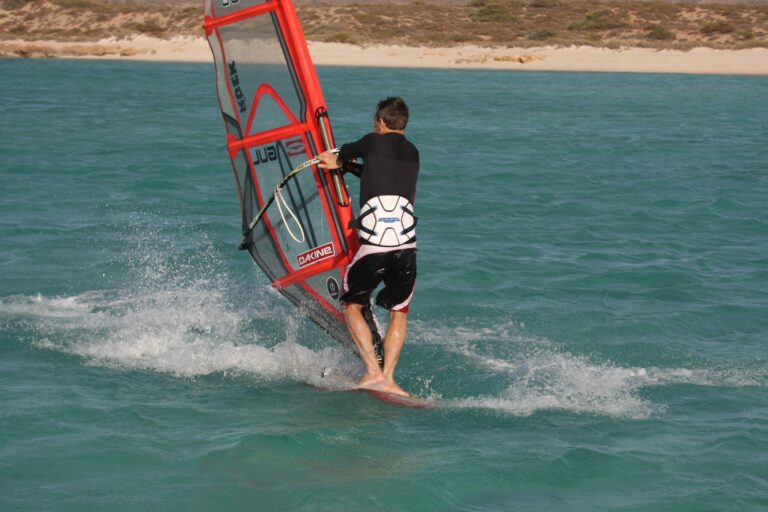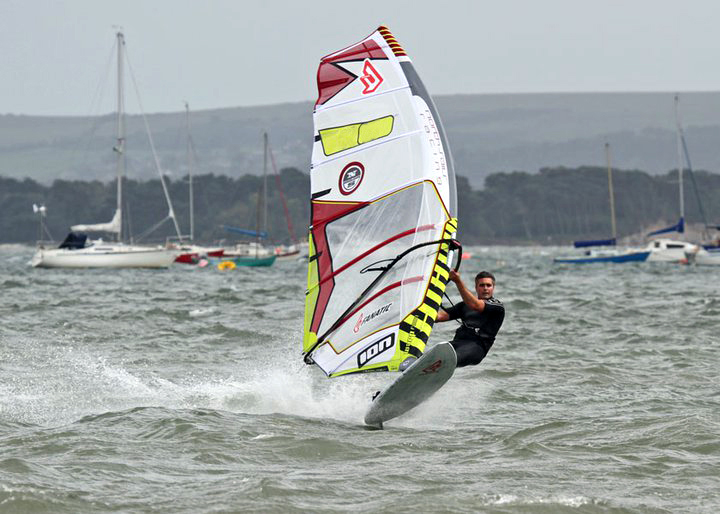As part of our Basics series Simon Bornhoft now goes through some of the key techniques which speed up your early stages of progression.
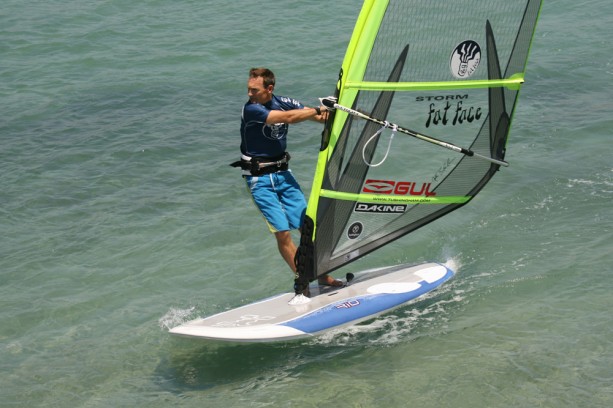
WIND DIRECTION
Your first thought is to work out where the wind is coming from. Look for local signs like flags or feel the wind blowing onto your face. Once you know the wind direction, you can then work out which direction you can windsurf in. Most windsurfers sail back and forth at 90 degrees to the wind. In sailing terms this is known as ‘beam reaching’ or sailing ‘across the wind’. Windsurfers always have their back to the wind so that they can lean back to oppose the power in the sail. So if you stand near the shoreline with your back facing directly to the wind and put your arms out to your side at 90 degrees to the wind, that will give you your approximate ‘beam reach sailing line to the left or right’.
It is possible to sail in other directions and our Wind Direction Diagram shows the different angles that you can sail in relation to the wind. Whilst this might seem complicated now, you soon start to get a sense of direction and how a board and sail align to the wind.
The idea is to try and sail back and forth and not drift downwind, so here’s some top tips to get you going.
NO GO ZONE – It’s impossible for a windsurfer to sail directly into the wind, it will just stop.
BEAM REACH or SAIL ACROSS THE WIND – This is what most people do most of the time.
UPWIND – You can sail roughly within 45 degrees of the wind.
DOWNWIND – You can sail directly downwind.
SETTING UP TO GET GOING
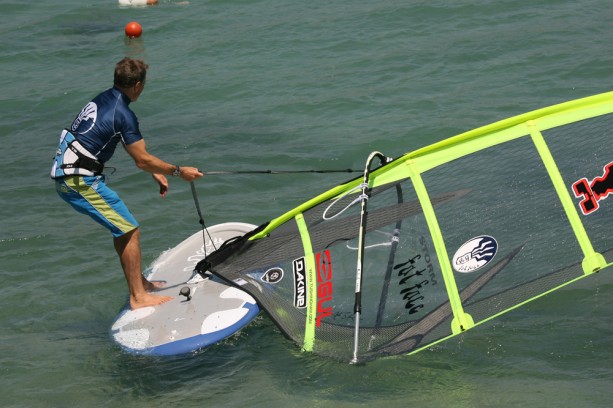
Stand with your back to the wind and position the board at approximately 90 degrees to the wind with the sail directly downwind of the board. If you have a daggerboard, make sure it’s fully down and then pull yourself up onto the board, holding the uphaul to steady yourself and help you onto your feet. Place both feet to windward of the centerline, with the front foot just forward of the mast base and the rear foot shoulder width apart.
TOP TIPS
Keep your back straight and pull the sail up using your legs, not your back.
Dig your heels to tilt the windward rail, this helps lever the board against the mast, which massively assists in releasing the rig from the water. Always try to slide the rig out of the water in the direction of the mast.
If the rig is lying downwind at 90 degrees to the board, that means the board is on a beam reach across the wind.
Look and choose a landmark ahead of you as a goal point to sail towards.
As the rig clears the water, let it swing freely downwind of you. Do all you can to stand straight and avoid breaking at the waist. Look forward, not at the sail. When the sail is clear of the water, position the board so it’s pointing slightly upwind of a beam reach line. Use the rig to turn the board just upwind of a beam reach. A good visual sign for this is that the clew end of the boom is angled slightly more towards the tail, like in this photo.
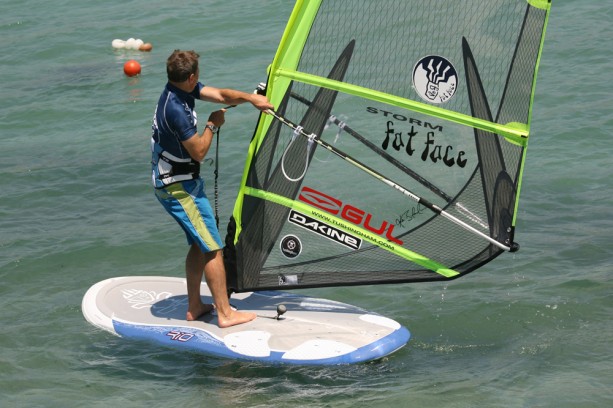
To get going you want the nose of the board facing 5-10 degrees ‘upwind’ of a beam reach.
If the board turns too far into wind, lean the rig forwards towards the nose, push through the front leg and the board will turn away from the wind.
If the board turns too away from the wind, lean the rig back towards the tail, push through the back leg and the board will turn back into wind.
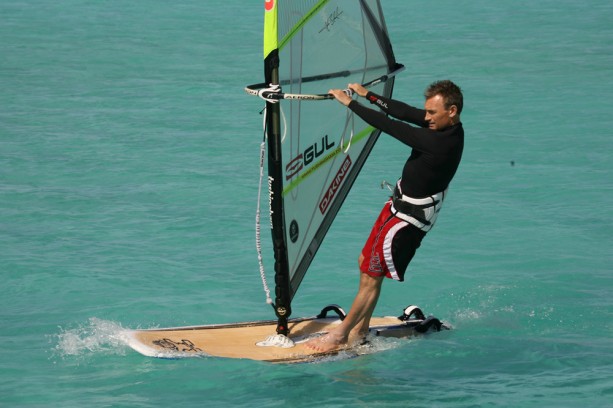
When you’re ready to go, look forward grab the boom with the front arm (left in pic) and draw the rig forward positively with the front arm and ‘sheet in’ with the rear arm by leaning your rear shoulder out and back towards the wind. You’ll feel an increased pull in the sail. To avoid breaking at the waist form a 7 shape with your body, keeping the shoulders outboard to resist and counter balance the pull from the sail. As you sheet in, the board will move forward! Congratulations, you’re windsurfing!
At lower speeds – both feet move forward and inboard, with increased toe pressure.
At higher speeds – Shift both feet back and outboard, with increased heel pressure if ever the board starts to excessively accelerate.
SIMPLE Summary
No matter what board you use, getting going uses the same principles.
- Start slightly upwind of a beam reach.
- Use your legs and body weight to lever against the sail to slide it out of the water.
- Look where you want to go and point the front foot forward.
- Pushing the through the front arm and pull on the rear arm to power the sail up.
Once you’re up and going, adopt an upright ‘7’ shaped stance; hips up, shoulders back and arms extended. This enables you to oppose the rigs power, drive the board forward and prevents you breaking at the waist.
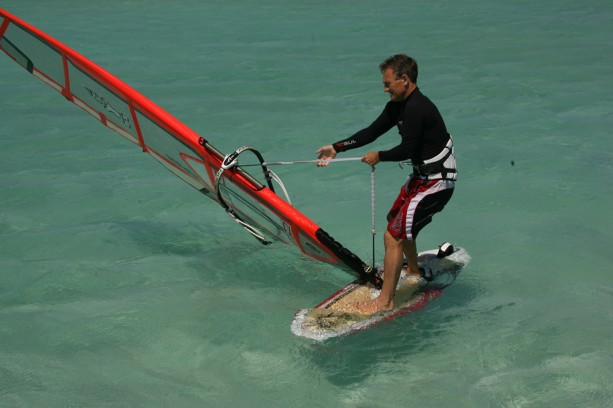
With practice experienced windsurfers uphaul boards so small that they sink well beneath the water until they have sufficient wind to get up and blasting!
Next up we will look at how you steer, control speed and turn!
Simon Bornhoft Windwise

